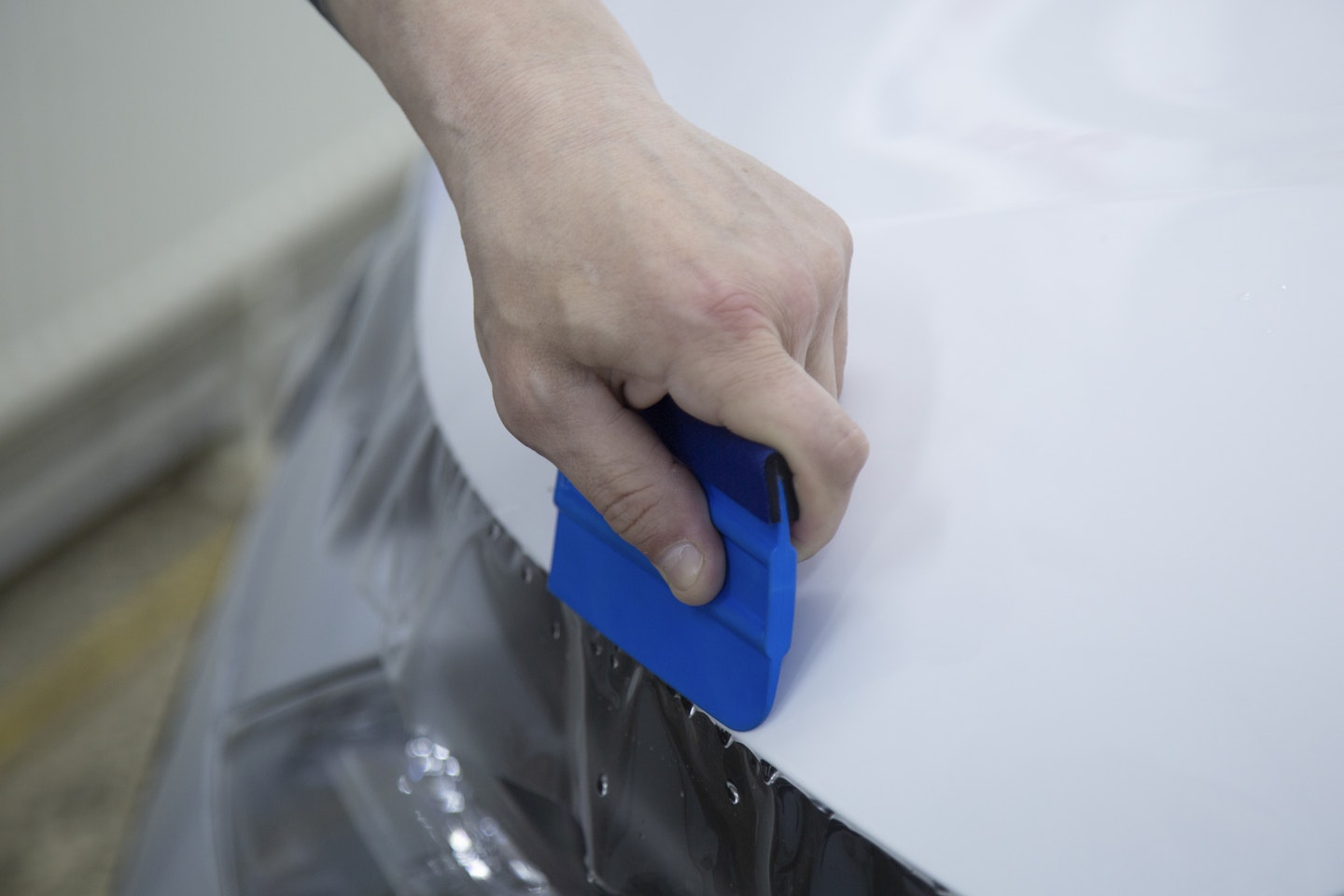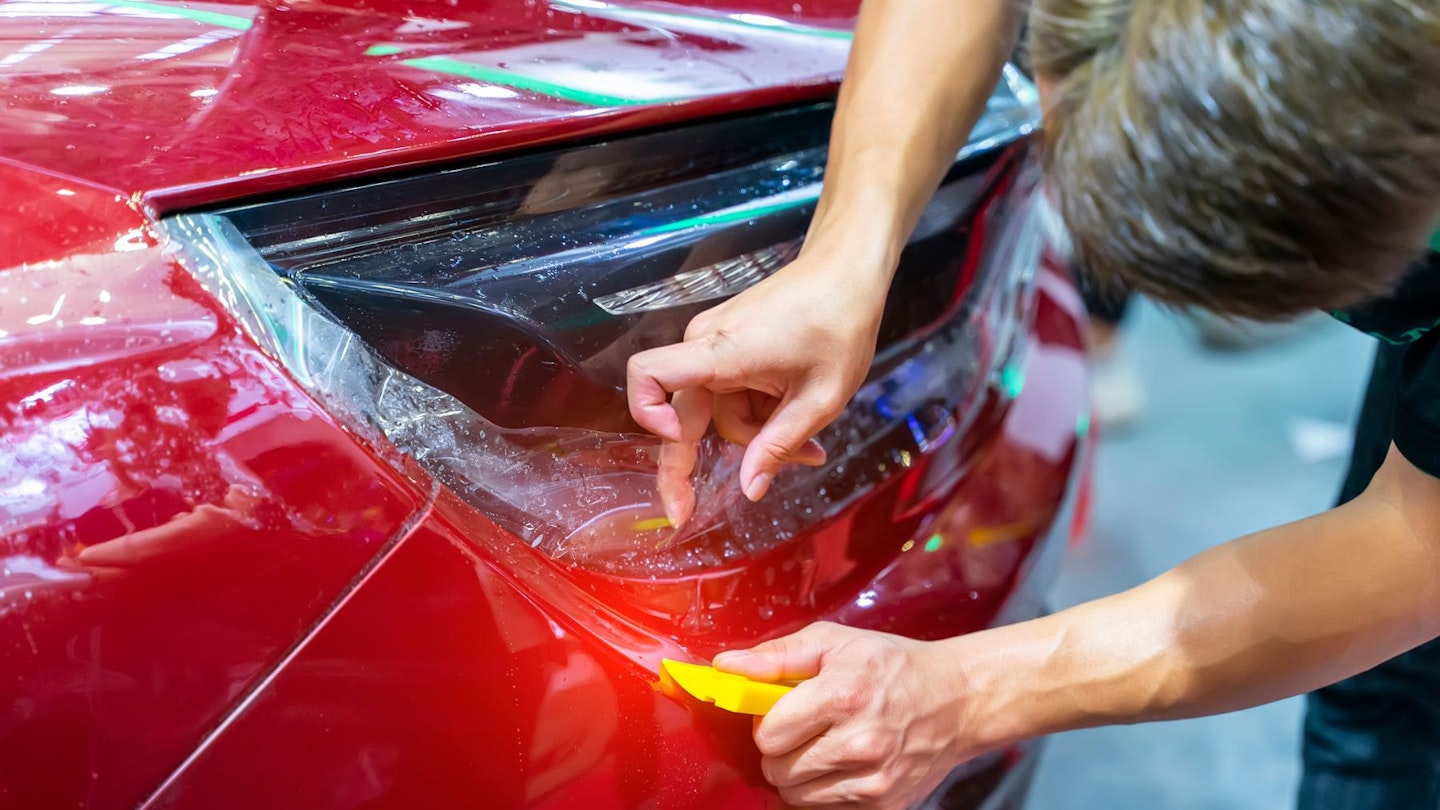Beyond the world of DIY paint protection, the undisputed king of keeping paintwork shiny and safe is PPF (paint protection film). This long-lasting protective layer of protection is best left to the professionals to fit, but will give your car the ultimate suit of armour.
Unlike even the fanciest of car waxes, PPF distinguishes itself by protecting against stone chips and other small abrasions that would otherwise leave scratches and marks. It's the ultimate way of protecting a car, even deployed on race cars to shake off the rubbing and racing that racing entails.
We spoke to Ruth Sturgess from Jules Sturgess Automotive, a PPF specialist based in Cambridgeshire to give the full rundown on paint protection film.
What is PPF?
Paint Protection Film is a tough, virtually invisible urethane film applied to the car’s paint to protect it from unsightly damage. PPF was initially developed to protect helicopter rotor blades from dust and stone damage during field service during the Vietnam War. It needed to be tough to withstand serious impact which makes it great for paintwork.
It was the durability and clear finish of the polyurethane support layer that makes it perfect for protecting paintwork. Able to withstand and absorb impacts from stones and other road debris, a properly applied film could even limit the damage caused by a key attack.
The topmost coat is made of gel which will self-heal minor scratches, scuffs and swirl marks naturally over time, the heat from the sun or an engine will speed up this process.
It also won't alter the finish of a car's paintwork. A sub-standard PPF can yellow over time, but is easy to replace.
How does PPF compare to a ceramic coating?

The fundamental difference between the two types of paint protection is that PPF is a physical barrier and ceramic coating is more of enhancement layer. Ceramic coatings are cheaper but they're chemical products you apply, not a physical layer that needs to be cut to size. You can apply ceramic coatings yourself with a little bit of practice, you wouldn't be able to do that with PPF, not if you want good results.
PPF lasts longer and can be replaced fairly easily. A comparative ceramic coating would need to be machine polished off.
Ruth tells us that it is worth considering how you use the car, the colour of the car and the types of roads you drive on before considering both whether you want to have PPF and also the coverage that is worth doing.
“Front end and sills PPF would be sufficient on a car that's regularly used to protect it from chips and stone rash. However, cars like the current 911 with it's swollen rear arches might also require rear arches as they're more susceptible to be stone chipped as well.”
PPF can also be tailored to fit your exact needs with as much or as little coverage as you want. "You can as much coverage as you want. For example we have a 718 Spyder RS in that is having front end, sills, full rear arches and doors. The owner lives in a countryside location and the coverage decision is based on protecting against the sides being scratched against hedges when forced over on a tiny road.”
The colour of the car also makes a difference. “Dark colours, mainly black, show swirl marks but once film is applied, they'll look immaculate and glossy while the non-covered panels still show the swirls. You can get rid of these by polishing these areas but they will return.”
PPF might seem to be the better option but it is more expensive. How long you plan on keeping the car and its value is integral to the value of money of either option. “Of course, I’m biased,” Ruth says, “but PPF will always ‘protect’ more than a coating because it’s a physical barrier.”
How to maintain a car with a PPF coating
We also spoke with Tom Turner, a detailing specialist for Jules Sturgess, to guide us through cleaning and maintaining a car that has PPF applied.
• Use a pressure washer; the pressure is your friend when it comes to removing dirt, contact-free. Take the pressure washer about 4/6 inches from the paint work and cover the entire car with the wash.
• Use a prewash in the form of snow foam or a chemical sprayer; this will soften and loosen the dirt again, making it easier to remove with the pressure washer.
• Start with the wheels as these are always the most stubborn and dirtiest part of the car so get them done early.
• Always use a separate bucket and dedicated brushes and mitts for the wheels, don’t contaminate the wash mitt you use on the paintwork.
• Use two buckets when carrying out the contact wash on the paintwork, one bucket with your fresh soapy water and another to rinse any trapped dirt and debris from your wash mitt.
• Make sure to thoroughly rinse all products off the car as any left behind will dry and cause streaks all over the car.
• Don’t forget to clean door jambs, boot shuts and under the sills; dirt builds up very quickly in these hidden areas.
• Use several drying towels to dry the car; avoid putting excessive pressure through the towel into the paintwork; carefully pull the towels over the panels.
• To aid drying further use a spray sealant or quick detailer once the majority of the water is off the car. This will help remove any water marks and leave a layer of protection and help to add a glossy finish to the paintwork
• When drying the car, always try and get the glass dry as quickly as possible to avoid water marks as glass stains very easily and is highly noticeable.
Meet the experts
Ruth Sturgess is the Business Manager for Jules Sturgess Automotive, a PPF specialist based in Cambridgeshire. Jules Sturgess Automotive is accredited and recommended by both Xpel and Suntek for PPF application.
Ryan Gilmore is the Deputy Autos and Tools Editor for CAR, specialising in car cleaning and hand tools. With an MA in Automotive Journalism, when he's not testing buckets he can be found looking at old Porsches.
